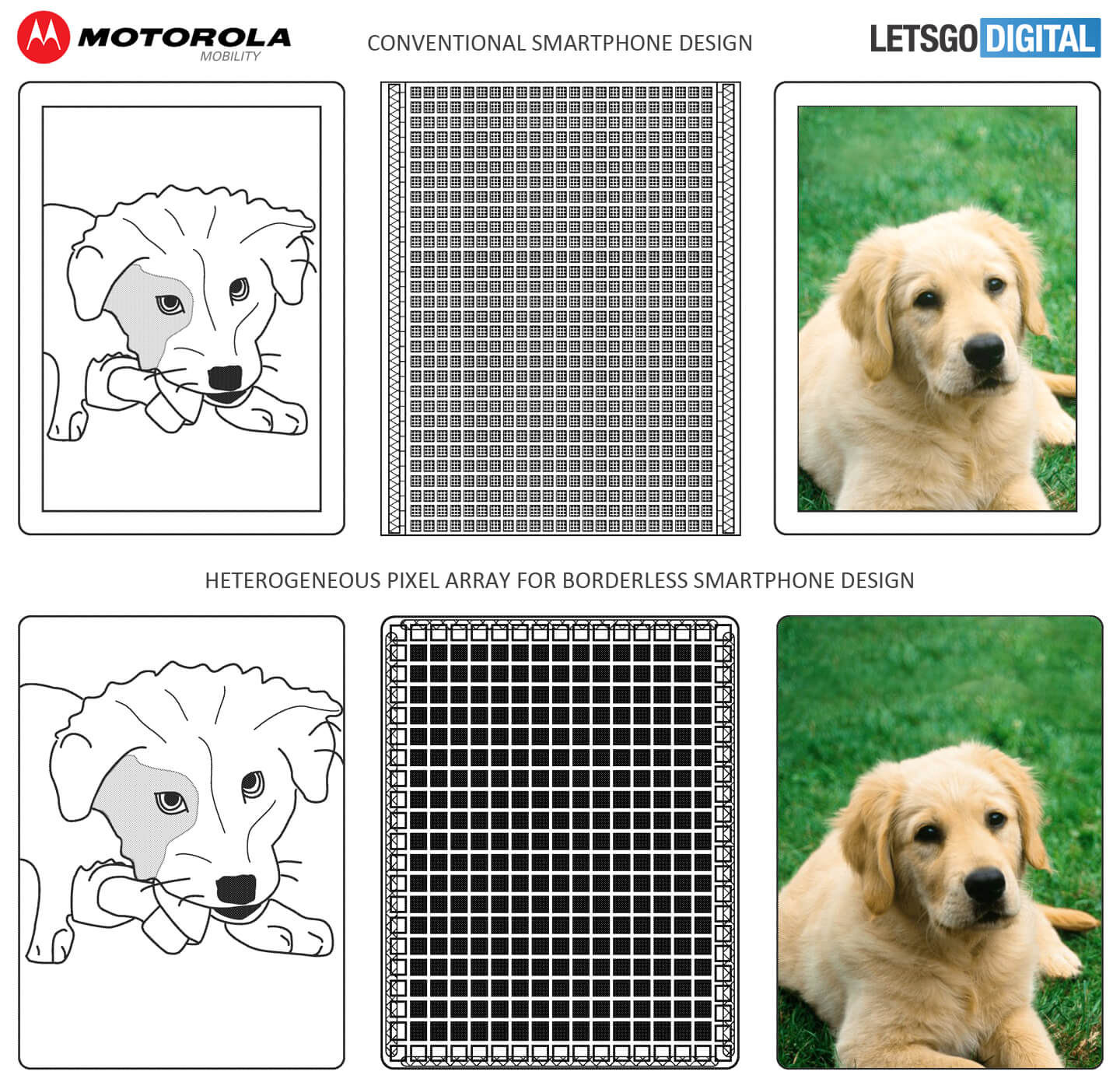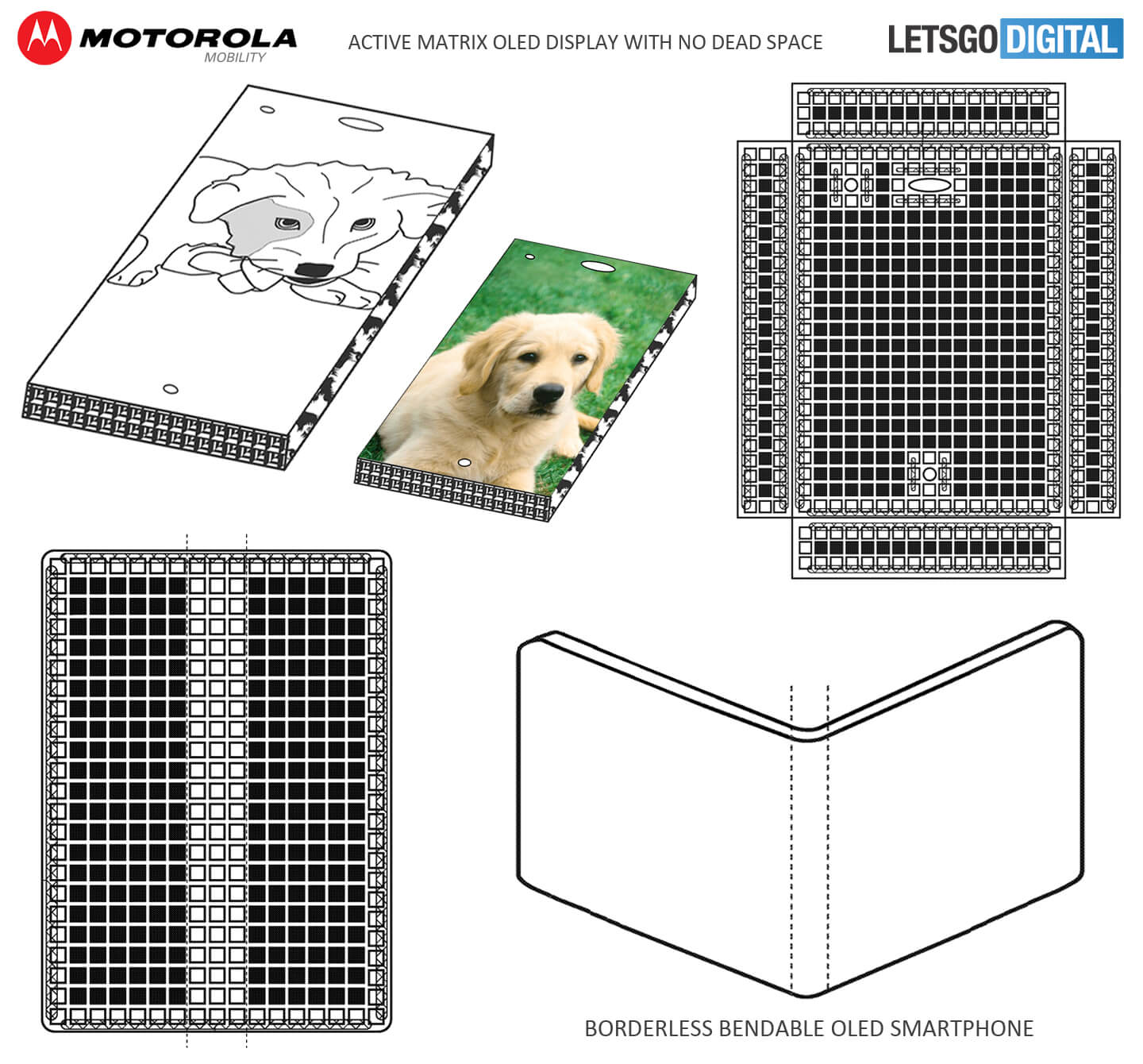Motorola received a patent for a flexible OLED-display without borders

Manufacturers are constantly thinking about the next step in the development of smartphones, and here Motorola is not behind the trends. The company has patented technology that will allow creating smartphones with minimal OLED display frames, as well as flexible gadgets.
How it works?

It starts with the fact that OLED-displays are active and passive. In the first case, each LED has its own control circuit and capacitor, so the pixel "remembers" its state until the next command is received. Passive matrices use a more simple control of the signal delivery at once on the entire line, and the brightness depends on the voltage. So seriously the cost of production, but there are limitations on the size of the panel.
Motorola engineers offer to combine two approaches. So, on the boundaries of the display will be located active elements, and the rest space will occupy passive LEDs. This way you can get rid of the borders around the edges. At the same time, the patent shows a design variant in which the screen comes to the side faces of the device.

Since the active pixels are more resistant to deformation, they can be located in the folded parts. As an example, the document shows an option folded in half the apparatus.
What's next?

The company filed its application in 2016, so that in secret laboratories can already test flexible devices. Actually, there's no need to guess - we saw working prototypes of a smartphone and a Lenovo tablet, and Motorola is part of a Chinese giant.
Source: LetsGoDigital